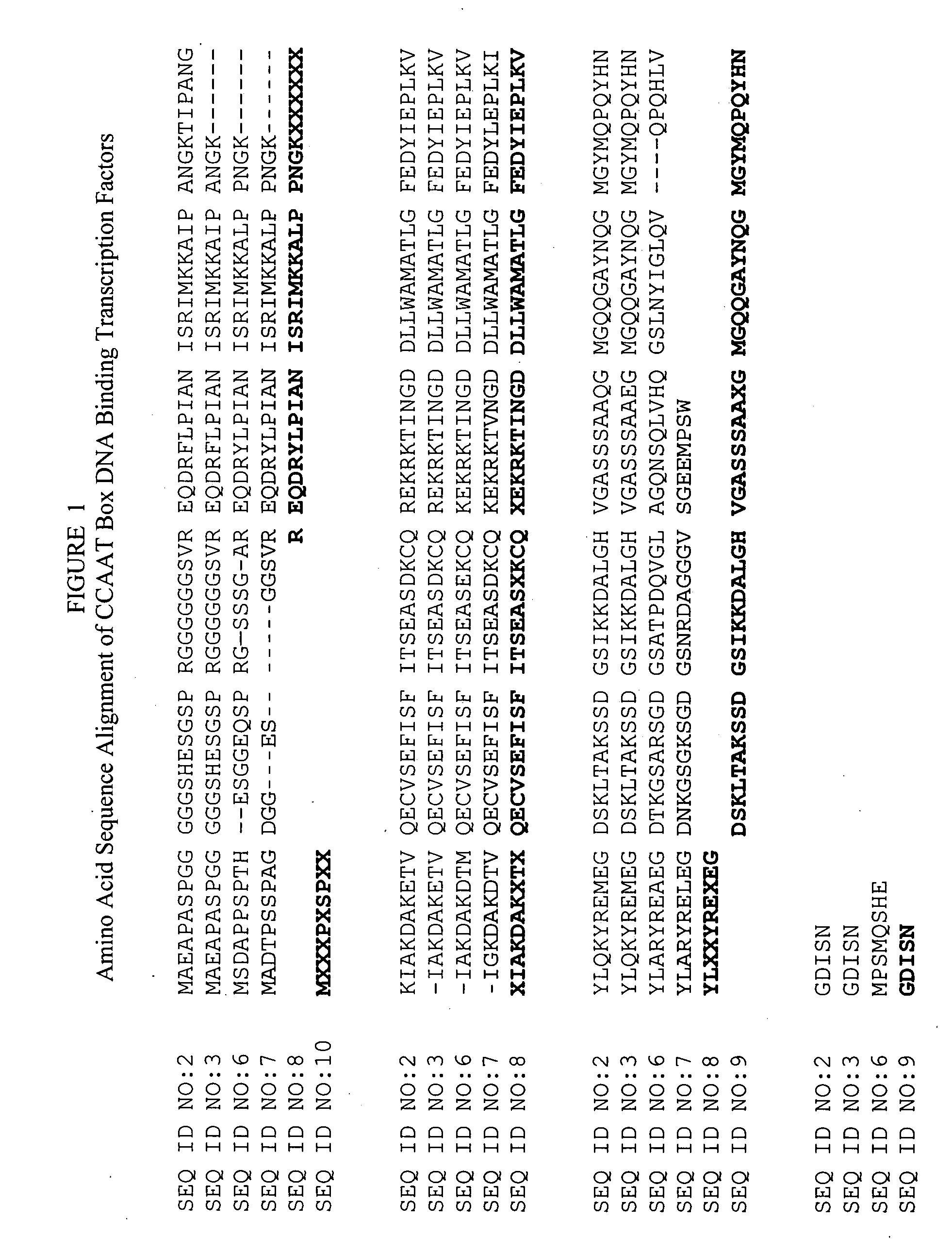Yield-improved transgenic plants
a technology of transgenic plants and dna, applied in the field of dna useful for producing transgenic plants, can solve the problems of increasing complexity of dna constructs, and achieve the effects of enhancing yield, enhancing and conferring resistance and/or tolerance to water defici
- Summary
- Abstract
- Description
- Claims
- Application Information
AI Technical Summary
Benefits of technology
Problems solved by technology
Method used
Image
Examples
example 1
[0043] This example illustrates aspects of the invention through the production of transgenic corn plants and seed with recombinant DNA that confers water-deficit tolerance.
[0044] Transgenic corn was transformed with a recombinant DNA construct having the nucleotide sequence of SEQ ID NO:1 and which comprises a rice actin 1 constitutive promoter and a rice actin 1 intron operably linked an corn gene which encodes a Hap3 transcription factor with the amino acid sequence of SEQ ID NO:2 followed by a Tr7 3′ terminator. The construct further comprised a CaMV 35 S promoter operably linked to an nptII marker gene. Twenty transgenic events in corn were selected as having either 1 or 2 copies of the construct and no oriV origin of replication from the vector. Eleven of the twenty events survived to fertile plants which produced seed. Seed producing plants were analyzed to verify the presence of the exogenous DNA encoding the transcription factor and accumulation of the transcription factor...
example 2
[0050] This example further illustrates the aspect of this invention relating to transgenic corn. Progeny seed of the transgenic corn produced in Example 1 was planted in a field trial to evaluate its water deficit tolerance as compared to the negative sibling (wild type). The plants were grown in a well irrigated field in Kansas. Water was withheld from half of the planting during the late vegetative stage. The experimental evidence showed that under water deficit conditions transgenic corn plants expressing the Hap3 transcription factor of SEQ ID NO:2 were healthier than the wild type and exhibited the following phenotypes: [0051] (a) likely to have a higher chlorophyll index, e.g. >42 in transgenic plants as compared to [0052] (b) likely to produce more photosynthate, [0053] (c) likely to have cooler leaf temperature, and [0054] (d) likely to maintain higher stomatal conductance.
example 3
[0055] This example illustrates the invention through the preparation of transgenic seed and plants with a crop improvement trait, e.g. water-deficit tolerant soybean.
[0056] Transgenic soybean was transformed with a recombinant DNA construct comprising a CaMV 35S constitutive promoter operably linked to an Arabidopsis thaliana gene which encodes the Hap3 transcription factor having the amino acid sequence of SEQ ID NO:7 followed by a terminator element. In a water deficit assay Transgenic soybean plants exhibited enhanced resistance to water deficit, i.e. less wilting, as compared to wild type soybean plants. In addition In particular, transgenic plants wilted less, had a higher chlorophyll content, had a higher relative water content, had a higher photosynthesis rate, than their gene negative segregants and parental control plants.
PUM
| Property | Measurement | Unit |
|---|---|---|
| gauge pressure | aaaaa | aaaaa |
| gauge pressure | aaaaa | aaaaa |
| weight | aaaaa | aaaaa |
Abstract
Description
Claims
Application Information
 Login to View More
Login to View More - R&D
- Intellectual Property
- Life Sciences
- Materials
- Tech Scout
- Unparalleled Data Quality
- Higher Quality Content
- 60% Fewer Hallucinations
Browse by: Latest US Patents, China's latest patents, Technical Efficacy Thesaurus, Application Domain, Technology Topic, Popular Technical Reports.
© 2025 PatSnap. All rights reserved.Legal|Privacy policy|Modern Slavery Act Transparency Statement|Sitemap|About US| Contact US: help@patsnap.com

